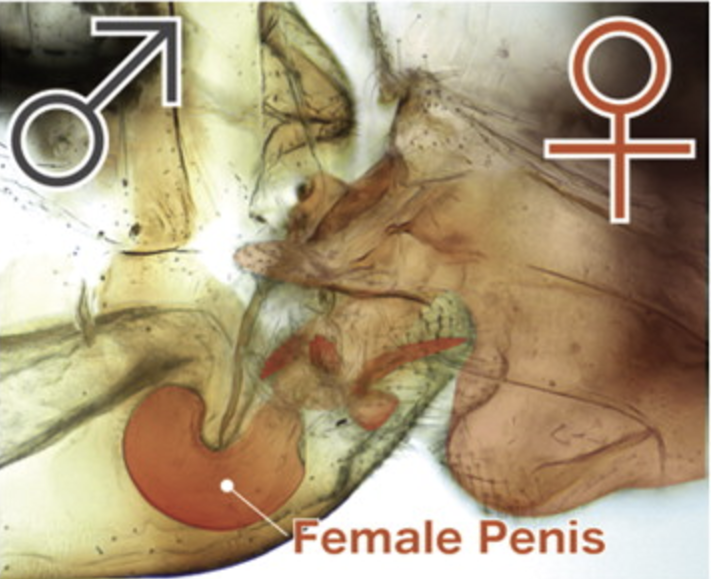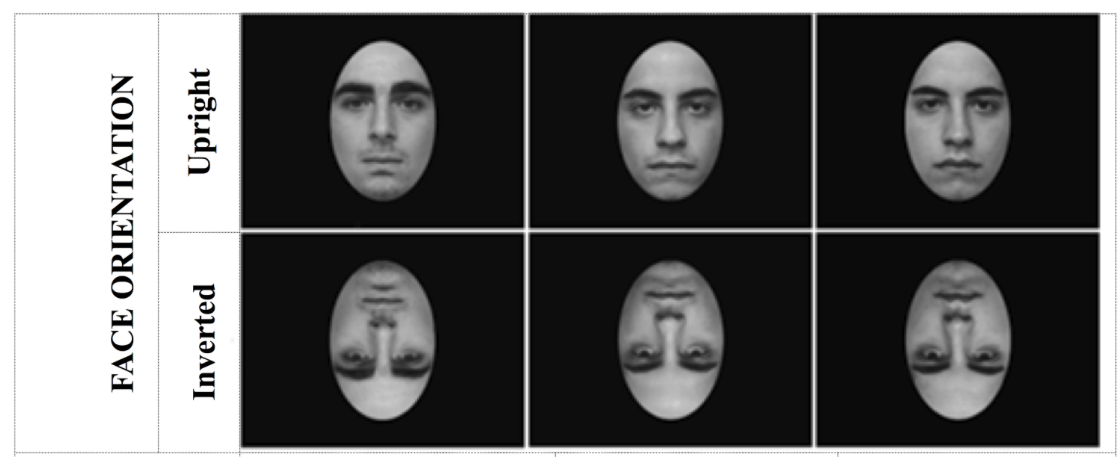Scientists spend their days hypothesising, experimenting and analysing in order to find evidence to better understand our strange Universe. Sometimes, that requires playing the didgeridoo and then falling asleep.
Photo: Justin Bellmor/Flickr
The Nobel Prize, the annual awards ceremony commemorating the most important advances in the sciences and humanities, is coming up soon. But yesterday came the arguably way more fun Ig Nobel Prizes. The Ig Nobel Prize highlights the best “Improbable Research”, or research that “makes people laugh and then think”. In other words, the best research.
Nearly all of the researchers travelled (on their own dollar) to Harvard University to accept their awards. At 27 years old, the Ig Nobels have been around long enough that yes, scientists really do care about accepting the prize. Several Ig Nobel laureates have even nabbed the Nobel Prize as well. But let’s be honest, would you be prouder of your award for graphene breakthroughs or your award for levitating a frog?
Yesterday’s award ceremony delivered yet another round of some of the silliest science papers you’ve ever heard of. You can watch it here. But if you don’t have two hours, here’s a quick round-up.
Physics: Can a cat be both a solid and a liquid?
Marc-Antoine Fardin from the University of Lyon won the Ig Nobel prize for “using fluid dynamics to probe the question ‘Can a Cat Be Both a Solid and a Liquid?’” His paper, published in the journal Rheology, uses cats to explain one of the central tenets of the study rheology, the field of physics concerned with how things flow; its motto is “everything flows”.
The paper is, of course, hilarious. It concludes that “much more work remains ahead, but cats are proving to be a rich model system for rheological research, both in the linear and nonlinear regimes”. But on the way, it makes the reader think about the equations of this field and how they might apply in this unorthodox scenario.

Image: Fardin
Peace: Curing sleep apnea with didgeridoos
Swiss researchers Milo Puhan, Alex Suarez, Christian Lo Cascio, Alfred Zahn, Markus Heitz and Otto Braendli were awarded the Ig Nobel Peace Prize “for demonstrating that regular playing of a didgeridoo is an effective treatment for obstructive sleep apnoea and snoring”. Giving the “peace prize” to a study about sleeping is a silly joke, but sleep apnea, ceasing to breathe during sleep, is a prevalent and potentially dangerous disease with plenty of therapies that don’t work.
Didgeridoo instructor and researcher Alex Suarez found that he and some students were more awake during the day and snored less after months of practising — so they decided to conduct a controlled experiment. The team rounded up 25 patients who complained about snoring, gave the experimental group four months of didgeridoo lessons, and had them practise six days a week (the control group was kept on a waiting list). While 25 is fairly small for a study, the experimental group really did seem to feel more awake during the day and have fewer nighttime breathing problems.
Economics: Will holding a crocodile make you a better gambler?
Matthew Rockloff and Nancy Greer at the Institute for Health and Social Science Research at CQUniversity in Australia picked up the economics prize for their “experiments to see how contact with a live crocodile affects a person’s willingness to gamble”. The researchers literally made the experimental group hold a 1m crocodile prior to gambling.
The experiment’s results showed that this state of arousal induced by crocodile holding can, in fact, increase gambling risk, as long as the gamblers don’t dislike holding the animal. This research builds on to a lot of other papers looking into the effects of emotional arousal on gambling, and what factors might make gamblers, especially problem gamblers, spend more or less money at the casino. If you’re afraid of crocs and worrying about gambling too much of your money away, maybe hold onto a big croc beforehand.
Anatomy: Do old men really have bigger ears?
James A. Heathcote in the United Kingdom took home the Anatomy prize for his study published two decades ago in the British Medical Journal on whether men’s ears grow as they age. This is a question you may have also thought about — but is it a real phenomenon, or are there other confounding factors at play? Four doctors got permission to study 206 male patients from age 30 to 93, and found that, well, ears really did seem to get larger by a teeny 0.22mm a year.
Unfortunately, the research doesn’t answer the question but merely establishes the correlation between age and ear length. It merely shows its premise to be true in a relatively small, homogeneous sample. If you’re a scientist reading this post, maybe there’s some work you can do here to help us understand the cause of this strange aural anomaly.

Image: Yoshizawa et
Biology: Female penis, male vagina, and their correlated evolution in a cave insect
Kazunori Yoshizawa, Rodrigo Ferreira, Yoshitaka Kamimura and Charles Lienhard won the Ig Nobel prize in biology “for their discovery of a female penis, and a male vagina, in a cave insect”. If you’ve spent any time reading Gizmodo, you’d know that genitalia, gametes and sex are important for more reasons than just keeping the species alive. The specifics of how animals bang could help researchers develop a better understanding of how natural selection and evolution work. What is evolution but a whole lot of banging?
The same is true of the Neotrogla genus of cave insects, according to the winning paper. These insects seem to have the opposite parts for their biological sex; the animal with the eggs is the one with the penis, while the animal that fertilises the egg receives the penis. These are one of fairly few species where the birth-giving animal is the one with the penis. The paper posits that understanding these bugs could give further insight into sexual selection and evolutionary biological novelties in general. The researchers accepted their prize via a video recorded in a cave.
Fluid dynamics: Walking backward could reduce (or maybe increase) coffee spilling
Jiwon “Jesse” Han from South Korea was a high schooler when he wrote this paper, and accepted the fluid dynamics prize for “studying the dynamics of liquid-sloshing, to learn what happens when a person walks backward carrying a cup of coffee”. (There isn’t a fluid dynamics prize every year — the categories change around.)
Han realised that wine lightly sloshes around the inside of a glass when you walk, but coffee in a cylindrical cup splashes right out. Hoping to find ways to reduce the slosh, he measured the different factors that lead to liquids oscillating inside of a cup (by putting a smartphone on top of the coffee cup and using at as an accelerometer). He found that walking backward or holding the cup differently both seemed to decrease the resonance of the coffee, the amplifying of the waves caused by their vibrations at just the right frequencies. Walking backward, coffee-holders also have the potential of “tripping on a stone or crashing into a passing by colleague who may also be walking backwards,” according to the paper. A different cup design could also help.

Image: Jesse Han
Nutrition: This bat species sucks human blood
Fernanda Ito, Enrico Bernard and Rodrigo Torres won the nutrition prize (not the human nutrition prize) for “the first scientific report of human blood in the diet of the hairy-legged vampire bat”. Vampire bats sucking human blood are the source of the ages-old horror movie trope, but not something that had been experimentally reported in the wild in the Diphylla ecaudata bat species, one with an incredibly picky diet. That is, until this paper.
But there’s more than just horror in a paper like this. D. ecaudata normally feeds only on the blood of birds. The researchers wondered, what if there was a scarcity of the animal’s prey? The presence of human and chicken DNA in the bat’s faeces alerted them to the fact that the bat’s diet might be a lot more flexible than they thought. This opens up a host of research questions, such as what to do as humans encroach on the bat’s habitats, what diseases might be spread, and how the bat might compete with other species of bats for resources.
Medicine: The neural bases of disgust for cheese: An fMRI study
Jean-Pierre Royet, David Meunier, Nicolas Torquet, Anne-Marie Mouly and Tao Jiang took the Ig Nobel Prize in medicine “for using advanced brain-scanning technology to measure the extent to which some people are disgusted by cheese”. The brain is a complex beast with its emotions, reactions, and specificity to the individual. So when it comes to an emotion such as disgust, the researchers wanted to know what actually goes on inside of our thinking caps.
After doing a large survey to gather how much French folks really liked cheese (the number was surprisingly high), the researchers put 15 cheese lovers and 15 cheese haters into an MRI machine and had them smell six cheese smells and six non-cheese smells. The participants pressed buttons corresponding to a one-through-five scale of hate it to love it. The results showed that cheese haters seemed to show marginally more activity in the parts of the brain that govern reward than the cheese lovers — which means that these brain structures might also govern disgust, too.

Image: Martini et al
Cognition: Can twins recognise their own faces?
Italian researchers Matteo Martini, Ilaria Bufalari, Maria Antonietta Stazi and Salvatore Maria Aglioti received the Ig Nobel prize in cognition “for demonstrating that many identical twins cannot tell themselves apart visually”. Recognising one’s own face is a trait crucial to our understanding of human cognition — that’s us, after all. But what if your face looks exactly like someone else’s? The researchers are ultimately interested in how sharing a face might affect someone’s understanding of self and personal identity.
The team recruited 10 pairs of identical twins and 10 controls and photographed their faces. Then, participants were shown the pictures and asked to identify the faces, both right-side-up and upside-down, as quickly as possible. The study found that the non-twins recognised their own face better than the twins did. While the study was limited (it was a small and homogeneous sample size), it could have important implications to understanding how we attach to ourselves and to others.
Obstetrics: Fetuses prefer their music delivered vaginally
Marisa López-Teijón, Álex García-Faura, Alberto Prats-Galino and Luis Pallarés Aniorte won the Ig Nobel in Obstetrics “for showing that a developing human foetus responds more strongly to music that is played electromechanically inside the mother’s vagina than to music that is played electromechanically on the mother’s belly”. Forget about all of those weird baby music players for a second — the fact of the matter is, fetuses respond to stimuli outside the womb.
We’ve spoken a bit at Gizmodo about fetuses responding to things while still in the womb, and how hard it is to tell what’s really going on. In this case, the researchers just measured facial expressions and found that, if you want to deliver music to your fetus, you should use a silly vaginal speaker that one of the scientists helped design. Product promotion aside, the scientists point out that better understanding of fetal reaction to sound could help potentially improve the well-being of a fetus and help scientists understand the fetal brain.
There you have it, the weirdest things that made the Ig Nobel committee think this past year. The Ig Informal Lectures will take place this weekend if you’re interested in learning more about these silly scientists.
Thank you science, thank you scientists.
